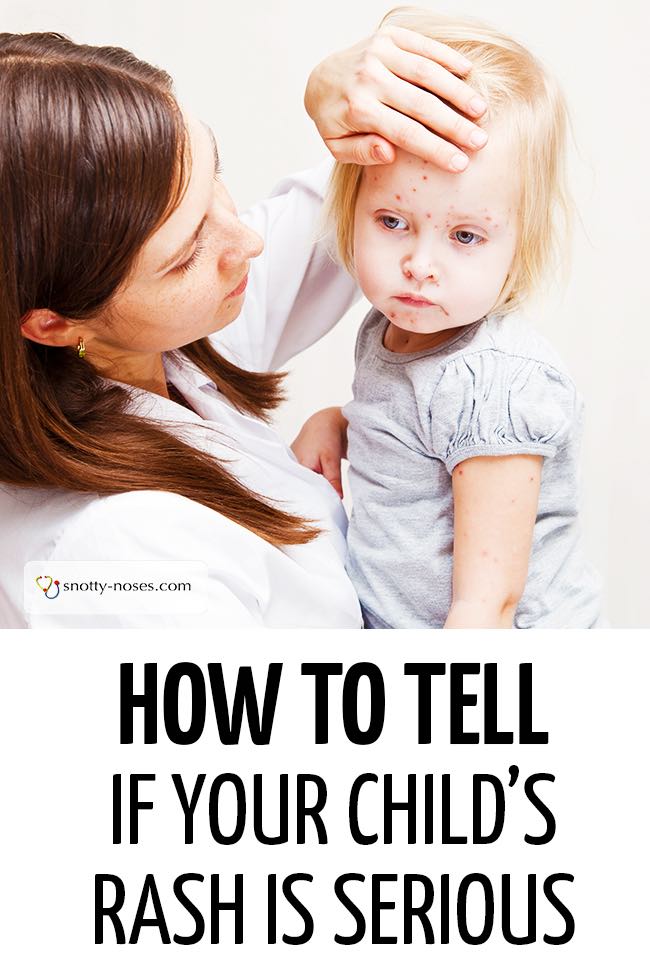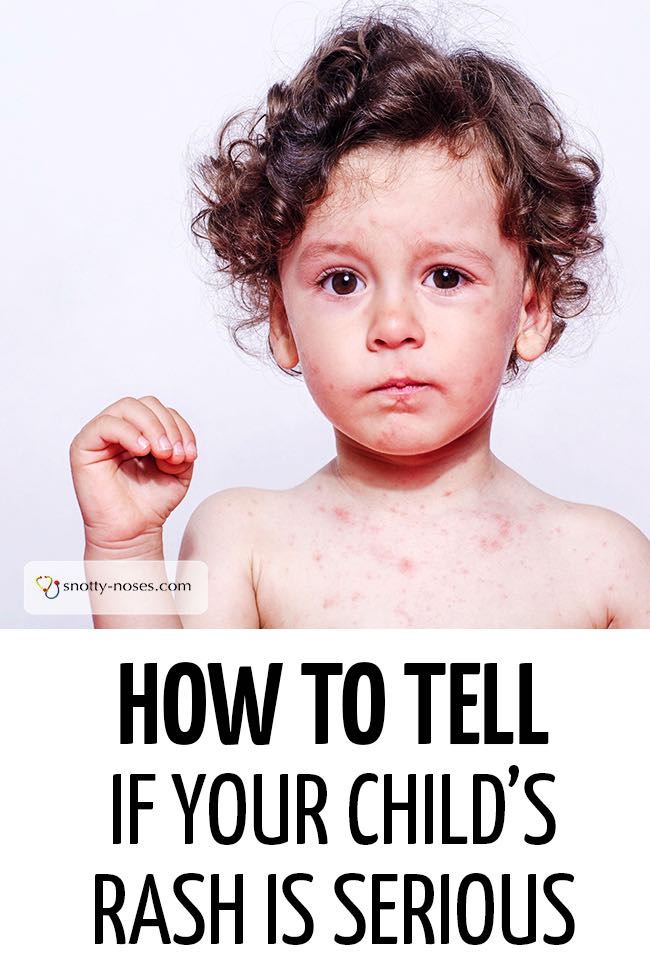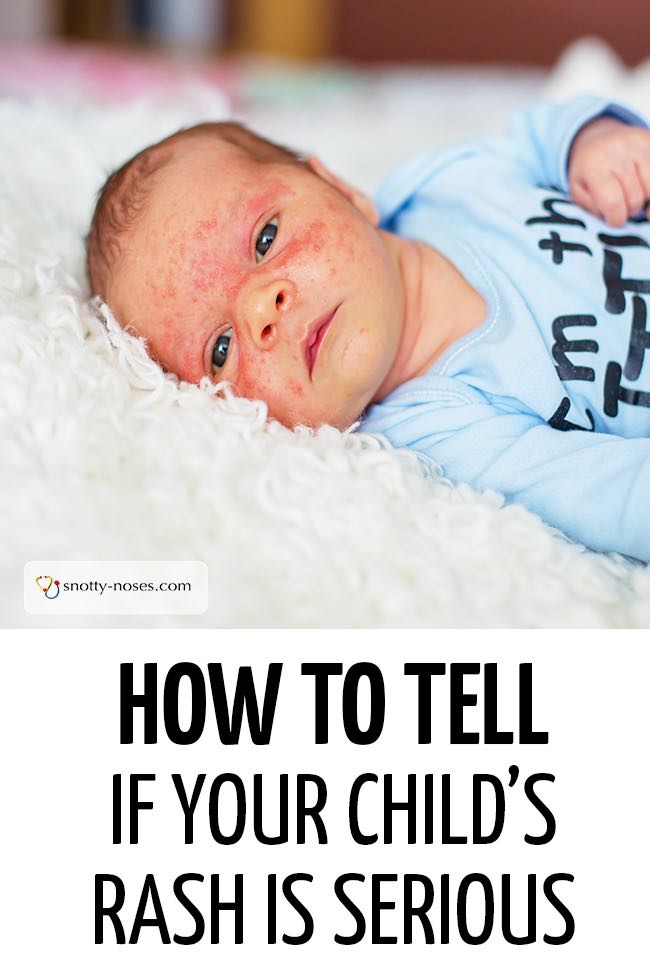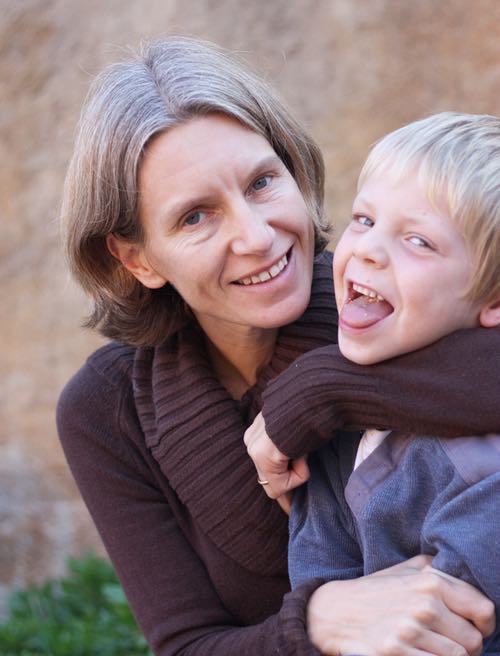Rashes
Children frequently get rashes. It is just part of growing up. As a parent, it’s important as part of your “kid’s health knowledge” to know a little about children’s rashes so that you can work out if it's a serious rash or not.
The Non Specific Childhood Rash
Most rash are red and splotchy and no one can really tell you what caused it. They go away, leaving no one much the wiser.
Disease Specific Childhood Rashes
There are other rashes that are specific to certain illnesses such as chicken pox, measles, rubella and slapped cheek syndrome. (There are enough disease specific rashes to fill a text book!)
One Scary Childhood Rash that All Parents Should Know
There is one notable rash that it is really really important that you know how to look for. The rash is called a ‘non-blanching’ rash and doesn’t fade when you press it.

Rashes can be divided up in many different ways, but one way is to divide them into 'blanching' and 'non-blanching'.
What is a Non-Blanching Rash?
The way to tell if a rash is non blanching is to press a clear glass over it. If the rash disappears it is blanching (good). If you can still see the rash, it is non blanching (bad).
Sometimes a non-blanching rash is really really small, only the size of a pin prick (called a ‘petechial’ rash).
Check out How to tell if a rash is blanching
Why is a Non-Blanching Rash so Important?
There are many causes of a non-blanching rash and not all of them are serious (for example, some children get a petechial rash around their eyes when they vomit). BUT there is a really really nasty disease called ‘septicaemia’ which often presents with a non blanching rash.
When I say "serious" I mean that children (or adults) can die quickly of septicaemia. Early treatment with antibiotics saves lives.
Get Your Non Blanch Rash Checked Out by a Doctor
It is therefore, worth taking your child to a doctor if they have a non blanching rash.
Fever and Non Blanching Rash? Go to Emergencies!
If your child has a fever or seem unwell in anyway with a non-blanching rash, I would by-pass your family doctor and take them straight to Emergencies. Yes, it’s that serious, it’s not worth taking risks with and no doctor is going to be cross with you if it turns out that your child has one of the mundane causes of a non-blanching rash.
Let me say it more loudly:
Emergency
NON-BLANCHING RASH AND FEVER OR UNWELL = CALL AN AMBULANCE OR GO STRAIGHT TO A&E
Related: 10 Things Most Children Don’t Know About Their Mother
Less Serious but Common Rashes in Children
Now that we have covered the worst possible scenario, let’s have a think about the other rashes that children get. There are certain infectious diseases that come with their own special rashes (chicken pox, measles, rubella, slapped cheek syndrome, scarletina, hand-foot and mouth disease).
Without writing an entire medical text book, it’s a bit difficult to cover them all in detail.
Related: What to do When Your Toddler Won’t Eat
The 'Non-Specific' Rash or Viral Xanthoma.
The most common rash that I see in hospital is the ‘non-specific’ rash or viral xanthoma.
Often I see children who are unwell with a fever, perhaps a runny nose and a strange rash. When I say "unwell", I mean not their normal bubbly selves, but not seriously sick either.
What the parents are most worried about is the rash and what exactly it is. The majority of these rashes are merely ‘viral rashes’. They look bad, their bark is loud, but their bite is not.
In fact, I have noticed that my children often have random rashes. They may be very slightly off colour, they get covered in a rash from head to foot and I start to wonder if this is the beginning of chicken pox. Two days later, they’re back to their normal selves and the rash has gone.

New Born Baby Rash
There is rash called 'Erythema Toxicum Neonatorum' that is very common in young babies.
It is totally harmless. It comes and goes in the first few weeks of life.
It may be just a red splotchy rash. Commonly there are white pustules that are raised and feel quite waxy. They look a bit like a spot that a teenager might get, but they are not infected. The baby is perfectly well in themselves with no other symptoms. The rash just gets better by itself.

When to take your Rashy Child to the Doctor
So, what should you do about these rashes that come and go?
Firstly, is Your Child Well or Unwell?
If you're worried that your child is unwell you should take them to the doctor regardless of the rash.
If you think your child is a bit unwell, but if it weren’t for the rash you wouldn’t take them to the doctor then you don’t need to go to the doctor (unless it is non-blanching).
Secondly, is the Rash Upsetting Your Child?
Is it itchy? If so, go to the doctor and they will probably give you an antihistamine to take.
Is it painful? If so, go to the doctor.
- Your child is unwell
- Your child is upset by the rash
Bottom-line: If you are worried, go to the doctor.
Related: Fever
Realted: Signs of Serious Illness
Heat Rash in Children
Also known as "prickly heat". It's very common and occurs in the hot stick months!
Heat rash is harmless but it can be irritating.
Related: Natural Remedies for Heat Rash in Children
Rashes Due to Allergies
The final scenario that I haven’t covered is allergies.
Some children are allergic to things and come out in rashes when they touch them or eat them.
What does an Allergy Rash Look Like?
The rash tends to be slightly raised, red and confluent in areas (all joined up). Sometimes the middle bit is whiteish. The majority of rashes that are caused by allergy are self limiting and the cause is seldom found.
Emergency
If your child has problems breathing (for example, wheezing) or facial swelling, they may be having an anaphylactic reaction call an ambulance or take them straight to A&E

 Feeding Toddlers.
Feeding Toddlers. Would you like your kids to eat more healthily? Check out the book!
Would you like your kids to eat more healthily? Check out the book!